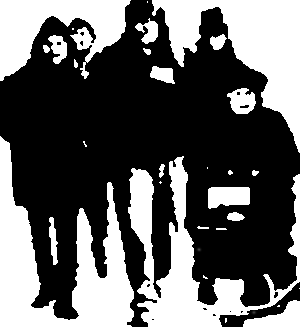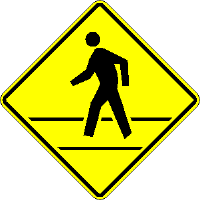
Walkability/pedestrian safety checklist

 |
Walkability/pedestrian safety checklist |  |
This checklist, developed by LA Walks, can help you gather information about walkability in your neighborhood and identify places where walking is unpleasant, difficult, or dangerous for pedestrians.
To contact people who can help solve problems that you discover, go to our contacts page.
Pick an area in your community where people walk or would like to walk.
Walk through the area with a small group of people (3-5 is the best group size).
Carry a clipboard and paper for noting conditions and locations. If possible, make notes directly on a map of the area. Note the location, condition (using the codes from the checklist), and any additional information that will explain the condition. For example: "1c - San Ildefonso opposite Alamo Rd. - sidewalk damaged by construction crew".
Don't hesitate to note problems, even if they don't fit the categories we've suggested. (If you find conditions in your neighborhood that we haven't anticipated in the checklist, please send us a message).
Note any suggested solutions, such as added sidewalks, crosswalks, etc.
After finishing your survey, try to prioritize and group the information. Your best chance of being heard by those who can solve problems is to present well organized information that describes the problems clearly and proposes reasonable solutions.
Keep in mind the needs of children, the elderly, and the disabled. They may need accommodations that would not be obvious to the average walker.
(If you've never done this before, you might first want to become familiar with some terminology related to pedestrian design features.)
To indicate problems, use codes like "1c" for item c under number 1.
Notice that the checklist items include links. If you click on a link, you'll be taken to a page that explains more about that particular item, including images showing good versus bad features.
Path Surface
Vehicular impacts on pedestrian pathway
Inadequate buffering from vehicular traffic
Slope of driveway apron located in sidewalk
Pedestrian access at road crossings
No curb ramp at intersection or mid-block crossing
Single ramp used for two crossing directions
Curb ramp of substandard design or construction
Pedestrian safety at road crossings
Crossing inadequately marked, signed or maintained
Traffic speed/volume make crossing difficult
Wide crossing due to over-generous corner turning radius
Drivers exceed speed limit
Drivers do not yield for pedestrians in crosswalk or crossing
Miscellaneous
Walkway not well lighted.
Dogs loose or other animal problems
Litter or trash on or around walkway
Any other problem you notice
Click on the link to view a printable copy
of the checklist in Adobe portable document format (PDF). You may also save the
document to your computer for later viewing and printing by right clicking and
selecting the menu item that says "Save target as" or "Save link as".
(Viewing or printing the PDF requires the Adobe Acrobat Reader. Click
on the icon to download the reader if you don't have it installed.)

| Home | Contacts | Send us a message |